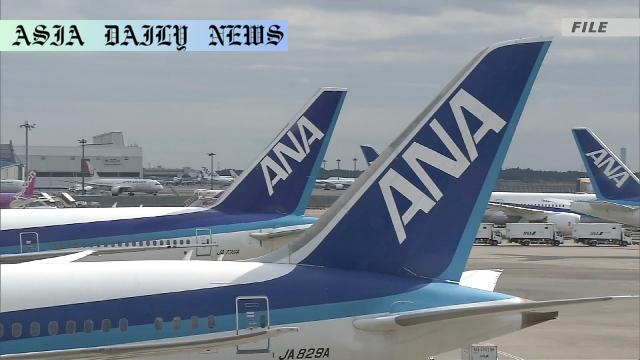Aircraft Purchase: ANA will acquire 77 high-efficiency planes over five years to bolster international and domestic capacities.
ANA has announced a $14.5 billion order for 77 new aircraft, marking its largest-ever single purchase.
It will acquire planes from Boeing, Airbus, and Embraer, introducing modern models with high fuel efficiency.
The new fleet aims to expand international travel routes, address rising tourism demand, and enhance domestic services.

ANA’s Record-Breaking Aircraft Purchase
Major Japanese airline operator ANA Holdings has unveiled plans for its largest-ever aircraft acquisition, redefining the scope of its operational capacities and signifying its confidence in global air travel’s resurgence. Over the next five years, the company will acquire 77 new passenger aircraft at an estimated list price of $14.5 billion. This monumental purchase underscores strategic measures to strengthen its fleet amidst the growing demand for international and domestic travel.
Suppliers and Aircraft Types
The order comprises acquisitions from Boeing in the United States, Airbus in Europe, and Embraer in Brazil. Specifically, ANA will purchase 30 aircraft from Boeing, focusing on long-haul international operations. These models are particularly suited for meeting the anticipated surge in inbound tourism and long-distance travel. Airbus will supply 27 units, specializing in mid-range high-capacity models, while Embraer—a Brazilian manufacturer—will provide 20 aircraft primarily for domestic use. Interestingly, these Embraer planes will replace the Mitsubishi Space Jet, Japan’s first domestically manufactured passenger aircraft, which was discontinued due to profitability challenges.
Addressing Environmental Concerns
In line with the global push towards sustainable aviation, ANA is prioritizing eco-friendly designs in its aircraft purchase. All 77 planes slated for acquisition boast high fuel efficiency, contributing to a significant reduction in carbon dioxide emissions. With environmental responsibility increasingly influencing corporate strategies across industries, this move aligns ANA’s operational goals with its sustainability objectives, enhancing its brand reputation.
Expansion of International Routes
The majority of ANA’s new acquisitions will serve long-distance international routes. This decision reflects the airline’s anticipation of increased global air travel demand following the relaxation of pandemic-induced restrictions. Japan expects to witness growth in inbound tourism due to its cultural appeal and broader acceptance of international visitors. These developments are projected to bolster the regional aviation industry, with ANA leading the charge.
Boosting Domestic Operations
Domestically, the Embraer aircraft are intended to enhance ANA’s services by operating in regional and short-haul routes. These aircraft promise operational efficiency and greater responsiveness to variable domestic passenger demands. Moreover, by moving away from the unprofitable Mitsubishi Space Jet, ANA is taking a pragmatic approach to optimizing its domestic services while recognizing global prowess in aircraft manufacturing.
Comparisons with Japan Airlines
The aggressive expansion plan also places ANA ahead of its domestic rival, Japan Airlines (JAL), which earlier announced the purchase of 42 new aircraft. While JAL aims to expand its international business by 40%, ANA’s decision to invest $14.5 billion demonstrates its clear aspiration to dominate Japan’s aviation market and secure a competitive advantage globally.
Economic and Strategic Implications
ANA’s move also echoes broader economic confidence in the recovery of airline travel post-COVID-19. With nations opening borders and businesses resuming global connections, airlines are witnessing revitalized passenger volumes. The significant investment signals ANA’s robust financial stability and its strategic foresight in capturing market opportunities. By adopting a fleet of fuel-efficient, modern planes, the airline is well-poised for sustainable growth in years to come.
Conclusion
This sweeping purchase by ANA not only illustrates its ambition to elevate its market position but also serves as a barometer of the aviation sector’s expected revival. Coupling environmentally progressive practices with operational expansion, ANA is setting a benchmark for airlines worldwide. As air travelers increasingly prioritize sustainability and efficiency, ANA’s forward-focused approach could serve as a roadmap for long-term success.



Commentary
Strategic Vision with ANA’s Aircraft Purchase
ANA’s announcement to acquire 77 advanced aircraft is a striking move that showcases both its ambition and insider understanding of aviation trends. This record-breaking investment stands as a testament to the company’s determination to secure a robust slice of the market, both internationally and domestically. Such a move is commendable, especially considering the challenges airlines have faced due to the coronavirus pandemic. The acquisition represents hope, resilience, and confidence in global travel.
Sustainability as a Priority
What makes this purchase particularly relevant is ANA’s decision to prioritize sustainability. The focus on acquiring fuel-efficient aircraft offers a glimpse into a future where airlines actively reduce environmental footprints while expanding operations. As the topic of climate change becomes more emphasized, it’s impressive to see major airlines like ANA implementing forward-thinking strategies aligned with global green initiatives. This act not only contributes to a greener planet but further strengthens ANA’s branding as a responsible corporate entity.
Challenges and Competitor Edge
While this purchase is a bold step, it comes with challenges. ANA must leverage its newfound capacity to remain profitable while justifying the massive investment. Additionally, moving away from domestic aircraft like the Mitsubishi Space Jet might seem controversial in fostering international competitiveness. Nonetheless, this decision appears practical, given its operational inefficiency and financial constraints. For an industry undergoing technological and operational paradigms, such strategic clarity is necessary.
As ANA gears up for this transformational phase, its trajectory will be worth monitoring. This investment may inspire rivals to follow suit, potentially igniting shifts within the global aviation industry. ANA’s future success could serve as a beacon for other airlines looking to adapt, thrive, and innovate while addressing ecological demands.